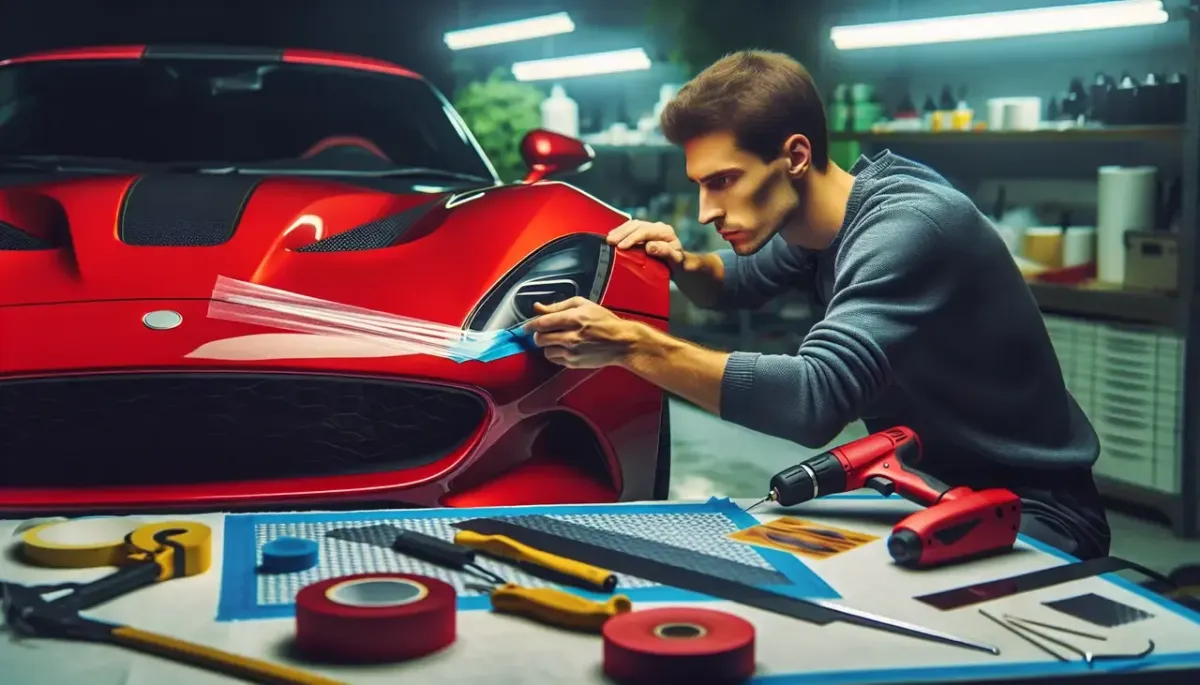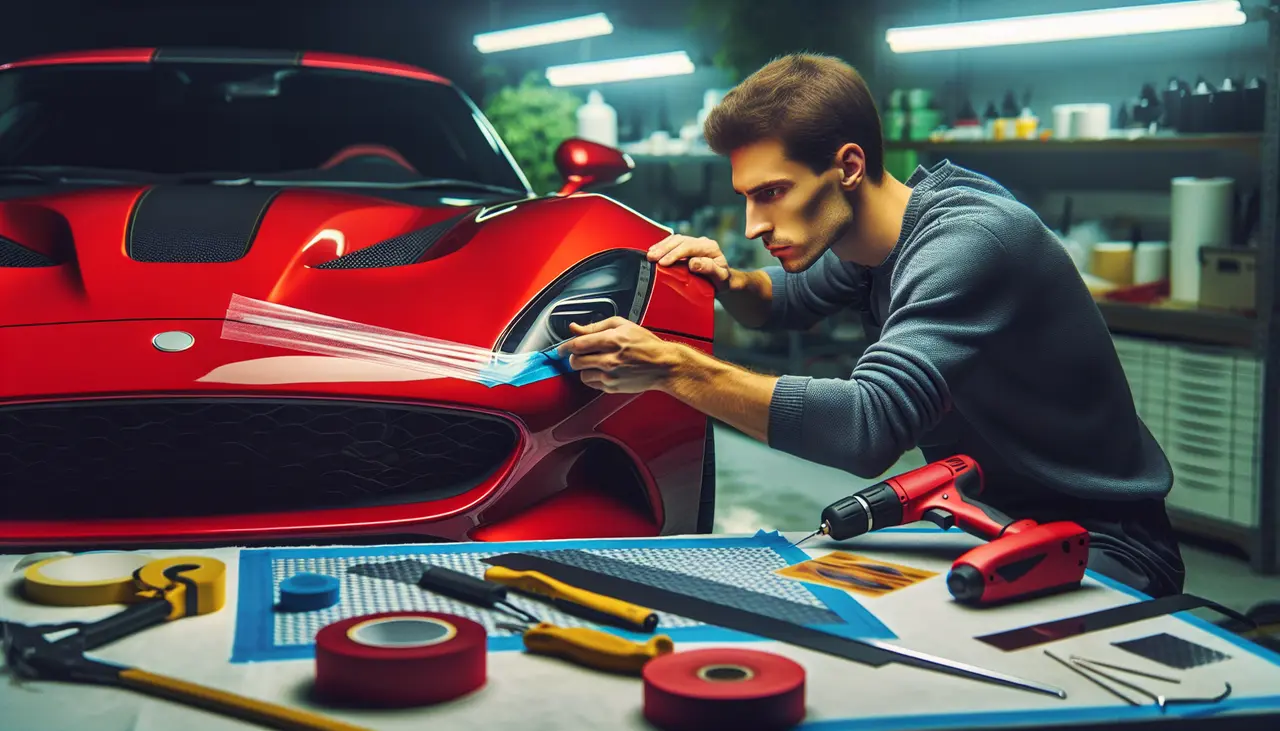My Awesome Detailer, LLC
My Awesome Detailer, LLC's Blog
"Auburn Alabama's #1 Resource for Ceramic Coating & Auto Detailing Information"

Top-Rated & Reviewed!

"A Step-by-Step Look at the Paint Protection Film Installation Process"
Diving into the world of car care, paint protection film stands out as a hero in shielding your vehicle’s exterior from wear and tear. If you’re curious about how this invisible shield is applied, you’re in the right spot. Let’s embark on a detailed journey, breaking down the process into manageable steps, ensuring you understand each stage in a simple, engaging way.

Understanding Paint Protection Film
Paint protection film (PPF) is an invisible armor designed to preserve your car's paintwork from various damages such as stone chips, UV light, bird droppings, and minor abrasions. This clear and durable material is made of a thermoplastic urethane, which means it's not only highly resistant to impacts but also possesses self-healing capabilities under heat. When you consider the investment you've placed into your car, ensuring its aesthetic and functional longevity with PPF becomes a clear choice.
Pre-Installation: Preparing Your Vehicle
The foundation for successful paint protection film application lies in meticulous preparation. The surface of your car must be free of contaminants, waxes, and any form of residue. This prep stage includes thorough cleaning, claying, and possibly polishing to ensure the paintwork is as flawless as possible. Imperfections under the film could mar the finish, making this initial step crucial. Moreover, ensuring the vehicle is dry and free of lint before the application indicates attention to detail that defines a high-quality finish.
Step-by-Step Installation Guide
With the vehicle cleaned and prepped, the installation of paint protection film can commence. This involves laying the pre-cut or bulk film over specific areas of your vehicle, adjusting for alignment before securing it into place. Using a squeegee, installers carefully push out air and water from underneath the film, ensuring perfect adhesion and a seamless appearance. This process requires expertise to minimize wrinkles or bubbles, which can compromise both the protection and the aesthetics of the paint protection film.
The Cutting Process: Precision Matters
Precision is paramount when trimming the paint protection film to fit your vehicle's contours perfectly. Advanced computerized plotting tools are often utilized to custom-fit the film to any make and model, ensuring an exact match without the risk of cutting the paint during the manual trimming process. It's a delicate balance between protecting the vehicle's surface and achieving a tailored fit that defines the skill of a professional installer.
Applying the Film: Technique and Tools
The application of paint protection film is an art that blends technique with precision-use of tools. A solution of soap and water is applied on the surface of the car and the adhesive side of the film, allowing for the necessary movement to perfectly align the film without premature adhesion. Once positioned, the squeegee technique is used to firmly affix the film, eliminating any bubbles and ensuring the film is snug against all edges and crevices.
Finishing Touches: Ensuring Perfection
After the paint protection film is applied, it's time for the finishing touches. This includes heating the edges to promote binding to the car's body and ensuring that no portion lifts or peels. Attention to detail during this phase prevents future failures and ensures the longevity of the film's protective qualities. Installers then perform a final inspection to guarantee that the film meets their standards of clarity, alignment, and perfection, offering peace of mind to the vehicle owner.
Aftercare: Maintaining Your Paint Protection Film
Maintaining paint protection film is straightforward but requires mindful care to preserve its protective properties. Avoid harsh chemicals and brush-based car washes, opting instead for ph-neutral soaps and soft cloths. Periodic inspections can help catch and rectify any issues before they compromise the film. By following these simple aftercare steps, your paint protection film will continue to shield your vehicle from the elements and maintain its pristine appearance for years to come.
Wrapping Up the Process
By now, you should have a comprehensive understanding of the paint protection film installation process. It's a meticulous task that requires precision, patience, and expertise, but the result is worth it. Protecting your car’s paint not only preserves its appearance but also maintains its value over time. If you ever decide to undertake this process or have it professionally done, remember that the key is in the preparation and the careful execution of each step.

My Awesome Detailer was founded with one mission: to bring elite-level vehicle protection and detailing to Auburn, AL and beyond.
Since day one, our focus has been delivering long-lasting paint enhancement, value retention, and top-tier appearance protection —with zero compromises.
We believe that true automotive care starts with clear communication and customized solutions, tailored to the specific needs of each vehicle and owner. From professional-grade ceramic coatings and self-healing paint protection film to precision paint correction and full-vehicle detailing, every service we offer is designed to elevate, protect, and preserve your investment.
At My Awesome Detailer, you don’t just get a clean car—you get long-term peace of mind and a finish worthy of a showroom spotlight.
Contact Info & Address
2709 Frederick Road, Opelika AL 36801
(334) 650-6499
Working hours
Monday: 8am-5pm
Tuesday: 8am- 5pm
Wednesday: 8am - 5pm
Thursday: 8am - 5pm
Friday: 8am - 5pm
Saturday: 8am-5pm
Sunday: Gone Fishin'
All Services by Appointment Only
Map
@ 2025 Copyright. MAD, LLC All rights reserved.
